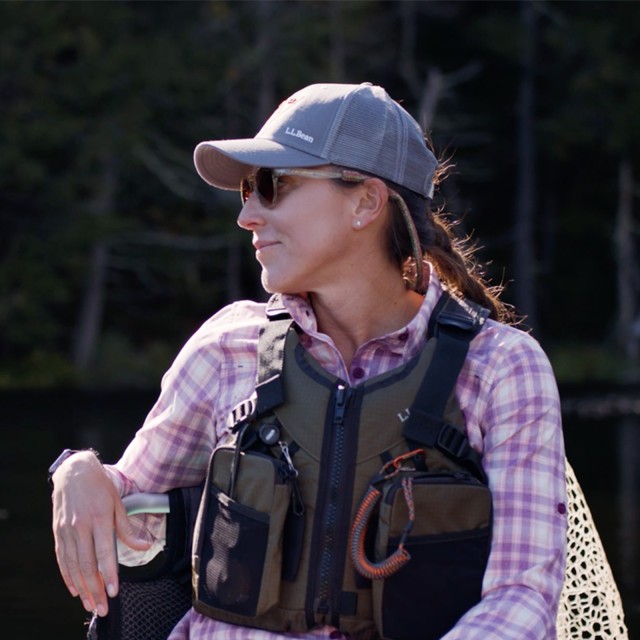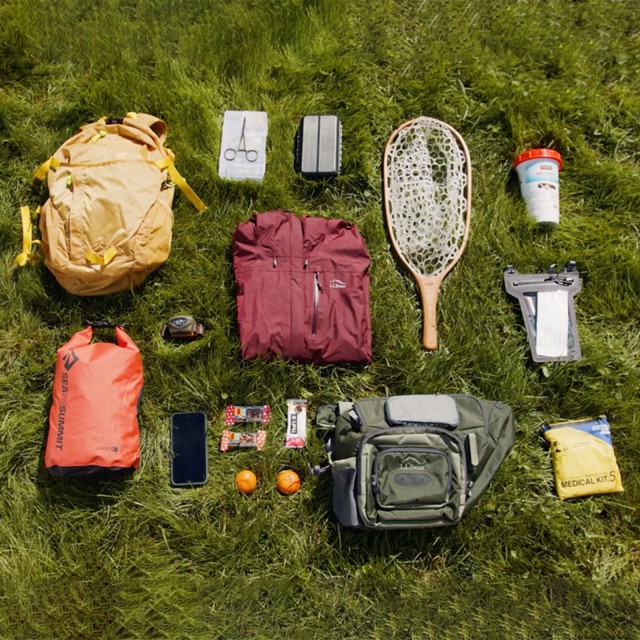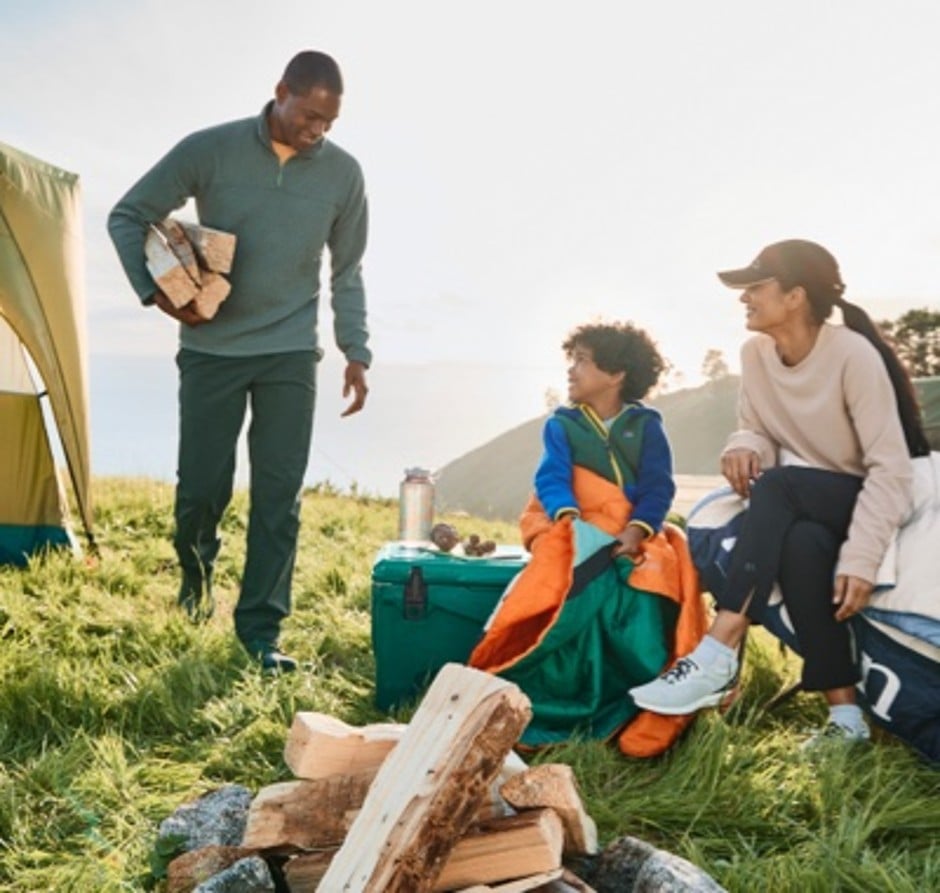(SPEECH)
[00:00:00.00] [MUSIC PLAYING]
[00:00:01.97]
[00:00:04.44] I love fishing. And I love kayaking. I wish there was a way I could combine the two. But I don't know how. If only there was an expert that could show me.
[00:00:15.42] Hey, Mackenzie.
[00:00:16.74] Hey, registered Maine guide, Christi Holmes. What are you doing here?
[00:00:20.55] You asked me to come here to take you kayak fishing.
[00:00:23.04] Perfect. What a coincidence. Christi, tell the folks a little bit about yourself.
[00:00:27.90] I'm an outdoor writer. And I do hike the Appalachian Trail. I'm also a registered Maine guide. So I guess if it's outside, I'm in. And that includes kayak fishing.
[00:00:37.35] Perfect. So what do I need to know before I hit the water?
[00:00:40.56] Well, we should go over how to choose a boat, what kind of gear we should bring with us, and some tips and techniques for moving and casting on the water. Are you ready to go?
[00:00:50.34] Sounds easy enough! Let's do it!
[00:00:52.95] Awesome. So today, we're going to be fishing on a lake. But you can also fish rivers and even the ocean. But lakes are good for beginners because it's flat and calm.
[00:01:01.32] So how is this lovely fishing kayak different than the one I already own?
[00:01:04.89] Well, you can fish out of any kayak. But this is a great beginner kayak. It's wide, which makes it more stable. And it's got amenities like a built-in fishing rod holder, cup-holder, and a spot to put your paddle for when you're fishing. It also has a latch back here for extra gear.
[00:01:27.09] Got it. So, wide and stable. What else do I need?
[00:01:30.16] Well, for clothing, I like to wear clothes that are quick-drying, moisture-wicking, and have built-in sunscreen, a hat, sunglasses, shoes you don't mind getting wet. And always wear your PFD. For gear, we've got our lures and tackle, tools like nips and forceps, a net, an anchor, and a first aid kit and a dry bag. And don't forget your phone and fishing license-- oh, and snacks, lots of snacks. Also, it's good to bring extra layers and any additional fishing gear.
[00:02:02.46] That's it?
[00:02:03.15] Yeah, that's it! Make sure all your gear is securely stowed. And I have a checklist. I like to double check I have everything because it's kind of a pain to come back to your car to grab something.
[00:02:14.28] Well, what are we waiting for? Let's go fishing!
[00:02:16.38] [MUSIC PLAYING]
[00:02:18.73]
[00:02:20.72] OK, so we're out on the water. We're in our boats. We have our special gear. Now all we have to do is fish. So how do we do that?
[00:02:29.12] A couple of great benefits about fishing from a kayak are that you can get up into shallow water. And it's much quieter than a motorized boat. So we want to keep it quiet. And the biggest thing you want to avoid is banging your paddle on the side of the boat because if you scare off the fish, then you can't catch them. You can softly paddle with just the tip and gently glide around that way.
[00:02:57.86] Oh, that's much quieter. Speaking of lures, what should we be using?
[00:03:04.14] Well, today, we're fishing for bass-- so crank baits, jerk baits, poppers. I try to pare down my selection to just my favorites. I try to pack light, the most versatile lures because unlike a large boat, we don't have as much room-- so trying to keep the cockpit clear.
[00:03:24.14] Yeah, that makes sense.
[00:03:25.13] [MUSIC PLAYING]
[00:03:26.83]
[00:03:29.16] OK, this is the part I was most anxious about. How do I cast without tipping over?
[00:03:34.95] Well, you can start with small casts as you get used to it. But the boat's going to move. It's designed to do that. Try to keep your waist loose. Eventually with more practice, you'll get better. And you'll get more comfortable. And you can even try standing up and casting. And I mean, eventually, it'll feel just like you're casting from shore.
[00:03:58.50] I think I'm going to stick with sitting for now. But you do you.
[00:04:01.59] [MUSIC PLAYING]
[00:04:03.55]
[00:04:07.00] Ooh, I got one.
[00:04:08.10] Fish on, fish on! I'm coming.
[00:04:10.82] Oh!
[00:04:11.56] I'm coming.
[00:04:12.31] Get the net, get the net!
[00:04:15.81] What did you get?
[00:04:16.71] Got him. Whoa!
[00:04:18.36] It's a largemouth.
[00:04:19.62] She's a beaut. All right, cut to this. Look at this fish I caught. Should I let him go?
[00:04:25.80] Sure.
[00:04:26.91] All right, now I'm ready. Let's catch another one.
[00:04:28.29] Yep, now it's your turn.
[00:04:30.79] So once I do catch a fish, do you have any tips for how to reel it in?
[00:04:34.47] Try to remain calm. And lift your rod tip up to set the hook. And then just keep reeling. Keep pressure on the fish. If you had an anchor out, you'd want to avoid the anchor line with the fish.
[00:04:50.12] Fish on! OK--
[00:04:51.71] Yup, keep reeling.
[00:04:52.86] Stay calm.
[00:04:53.42] Stay calm, nice and steady. Grab your net.
[00:04:58.04] Here we go.
[00:04:59.18] Yep.
[00:05:00.53] OK.
[00:05:01.28] There you go!
[00:05:02.33] Does it have a black lateral line?
[00:05:04.58] It does, yeah.
[00:05:05.30] Then yep, that's a largemouth.
[00:05:06.86] Let me get a pic!
[00:05:07.76] Yeah, someone get this one-- real bragger here.
[00:05:10.29] Yeah!
[00:05:13.69] Wow, that was wicked easy!
[00:05:15.70] It is easy. You just need your kayak, some gear, and a little practice moving and casting on the water.
[00:05:23.03] Thanks for walking us through that, Christi-- or paddling us through it.
[00:05:28.72] No problem, McKenzie. I think I'm going to head back out. Do you want to come?
[00:05:32.95] Yeah, let's go! I think I'm going to catch a bigger one this time.
[00:05:37.52] Well, the bar is pretty low, so.
[00:05:40.30] If you're interested in kayak classes, trips, or tours near you, check out our Outdoor Discovery Program at llbean.com
[00:05:47.23] [MUSIC PLAYING]
[00:05:48.73]
Paddling and fishing are two great pastimes that are even better together – and it’s easy to combine them. This guide will walk through every step to get out there for your first kayak fishing outing, from choosing a kayak, to collecting your gear, to safely casting and reeling on the water.
Benefits of Fishing Kayaks
You can fish out of any kayak, but a kayak designed for fishing is wider and more stable than others, so you can move around and cast without wobbling. The seat is also more elevated, giving you more visibility and freedom of movement.
A fishing kayak also has many features specifically for heading out with fishing gear, like rod holders and a paddle park for when you swap your paddle and rod. It may also have a drink holder, bungees for lashing gear, and hatches for more storage.
Essential Kayak Fishing Gear
Here’s a quick rundown of the clothing and gear you’ll need for a few hours on the water. Make yourself a checklist to ensure you have everything before you head out; once you’re on the water, it’s hard to pop back to your car for something you forgot.

CLOTHING
- Moisture-wicking, quick-drying, sun-blocking clothing
- Water shoes
- Hat
- Polarized Sunglasses
- PFD

GEAR
- Kayak
- Fishing rod and reel
- Paddle
- Lures and tackle
- Tools (pliers, nippers, hook remover, knife)
- Net
- Anchor
- Dry bag with first aid kit, smartphone, and fishing license
- Water bottle
Kayak Fishing Tips and Techniques
MOVE QUIETLY
You can’t catch the fish that you scare off, so you’ll want to make sure you know how to move around quietly. Too much paddling will startle fish, and bumping your kayak with your paddle is even worse. You can make slight adjustments by simply casting and then reeling in your lure. You can also use short paddle strokes, dipping your paddle lightly, to turn and glide silently.
PICK A VERSATILE LURE
Pare down your lure selection to more versatile or specific lures you will focus on – unlike fishing from a large boat or even from shore, limiting the amount of gear to your best and your favorites will generally be much more productive - and reduce the clutter in your cockpit!
KNOW WHEN TO USE YOUR ANCHOR
Don’t let a light breeze or light current move you away from a good spot – when you find a place you like, drop anchor. On the other hand, if you find a breeze or current that will drift you along where you want to go, kick back and let it move you until you find the fish.
ROLL WITH YOUR KAYAK
When casting, you’ll feel the kayak rolling underneath you – that’s what it’s designed to do. Go with it. The trick is to keep your waist loose, so that the kayak can roll or wobble underneath you while your top stays steady. Once you get the hang of it, you’ll feel just as steady casting from a kayak as you do standing on the shore.
KEEP YOUR COOL WHEN YOU HOOK A FISH
Focus on staying balanced. Apply pressure in the opposite direction from the way the fish is moving – if the fish goes right, apply pressure to the left. When you get the fish closer, be aware of where your anchor is, and guide the fish around so it doesn’t get tangled. Finally, use your net to scoop it up – just make sure you don’t lean towards it too far, or you could tip over.
Planning some paddling adventures? Get outfitted with everything you need:



